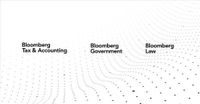The share of active credit cards in the US making only minimum monthly payments rose in the fourth quarter to the highest level in 12 years of data, according to the Federal Reserve Bank of Philadelphia. This increase is a concerning sign for many consumers, as it reflects a growing trend of financial strain among Americans.
On April 9, 2025, the Philadelphia Fed released a report indicating that approximately 11.1% of active credit card accounts made only the minimum payments during this period. This figure marks an increase from 10.9% in the third quarter of the same year. The report also highlighted a troubling rise in the share of accounts that are 90 days past due, reaching record levels.
These trends, as noted by the authors of the report, suggest a significant increase in consumer stress. The data points to a broader issue affecting many households, as the financial landscape continues to shift. With rising costs of living and inflationary pressures, many consumers find themselves in a precarious position.
Experts warn that relying solely on minimum payments can lead to long-term financial difficulties. When consumers only pay the minimum, they often end up accruing more interest on their balances, which can spiral out of control. This situation not only affects individual credit scores but can also have wider implications for the economy.
As the cost of living rises, many Americans are feeling the pinch. The Philadelphia Fed's data highlights the need for consumers to reassess their financial strategies. With an increasing number of people turning to credit to cover everyday expenses, the reliance on credit cards is becoming more pronounced.
In addition to the increase in minimum payments, the report also revealed that the total revolving card balances reached a new series high. This alarming trend indicates that consumers are not only relying on credit more than ever but are also accumulating more debt in the process.
Financial experts recommend that consumers take proactive steps to manage their credit card debt more effectively. Strategies such as creating a budget, prioritizing debt repayment, and seeking financial advice can help individuals regain control over their finances.
Moreover, the rise in minimum payments and overdue accounts is a wake-up call for lenders as well. Financial institutions may need to reconsider their lending practices and offer more support to consumers struggling to manage their debts. This could include providing financial literacy resources or restructuring payment plans to help borrowers stay on track.
As we move further into 2025, the implications of these trends will become clearer. Will consumers be able to adapt to the changing economic landscape, or will the reliance on credit continue to escalate? The answers to these questions will likely shape the financial health of many households across the nation.
In summary, the recent report from the Federal Reserve Bank of Philadelphia sheds light on a troubling trend in consumer credit behavior. As more Americans make only minimum payments on their credit cards, the potential for financial strain increases. This situation calls for both consumers and lenders to take action to address the challenges posed by rising debt levels and overdue accounts.





